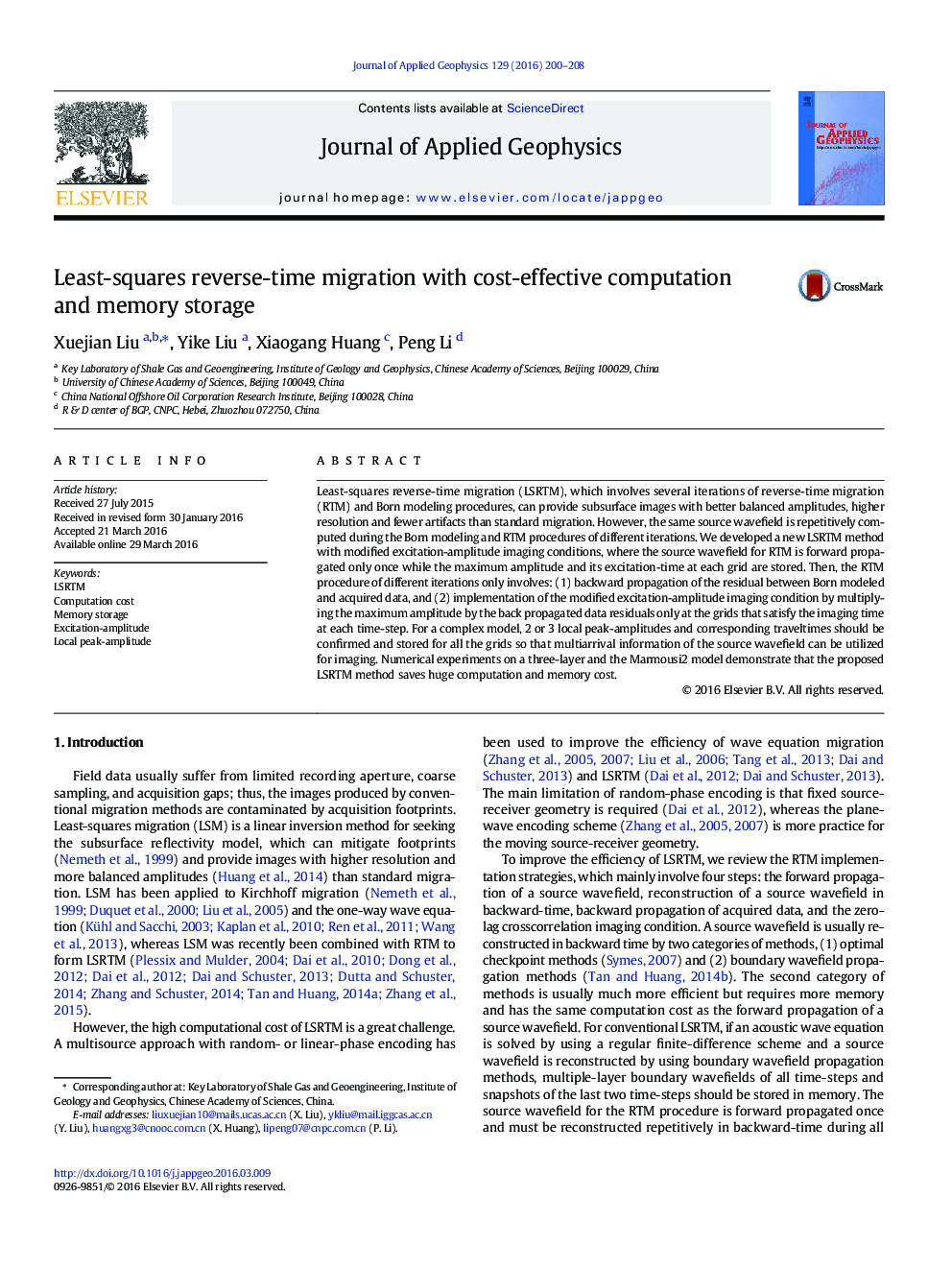| Article ID | Journal | Published Year | Pages | File Type |
|---|---|---|---|---|
| 4739842 | Journal of Applied Geophysics | 2016 | 9 Pages |
•We develop a LSRTM method using only several peak amplitudes of source wavefield for migration.•Compared with conventional LSRTM, similar data residual convergences are provided.•About 25% computation cost of conventional LSRTM and a large amount of memory storage are saved.
Least-squares reverse-time migration (LSRTM), which involves several iterations of reverse-time migration (RTM) and Born modeling procedures, can provide subsurface images with better balanced amplitudes, higher resolution and fewer artifacts than standard migration. However, the same source wavefield is repetitively computed during the Born modeling and RTM procedures of different iterations. We developed a new LSRTM method with modified excitation-amplitude imaging conditions, where the source wavefield for RTM is forward propagated only once while the maximum amplitude and its excitation-time at each grid are stored. Then, the RTM procedure of different iterations only involves: (1) backward propagation of the residual between Born modeled and acquired data, and (2) implementation of the modified excitation-amplitude imaging condition by multiplying the maximum amplitude by the back propagated data residuals only at the grids that satisfy the imaging time at each time-step. For a complex model, 2 or 3 local peak-amplitudes and corresponding traveltimes should be confirmed and stored for all the grids so that multiarrival information of the source wavefield can be utilized for imaging. Numerical experiments on a three-layer and the Marmousi2 model demonstrate that the proposed LSRTM method saves huge computation and memory cost.
